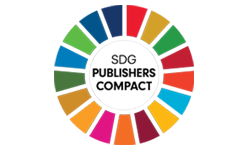China has demonstrated world leading wind energy development in the last five years which can be attributed to the fusion between its design and manufacturing strength in indigenous wind turbine industry and newly emerging wind energy industry in absorption of global best practices. An empirical analysis of China’s wind energy development trajectory over the last decade focusing on the technology sourcing from foreign firms in support of domestic players for accelerating functionality development through enhanced knowledge identification, absorption, assimilation and acclimatization was attempted. Important lessons learned include (i) importance of supply chain in the technology diffusion, (ii) effective technology acquisition and assimilation through early domestic firm engagement, (iii) effect of relevant domestic firms involvement in technology transfer partnership to induce inter-industry spillovers, and (iv) a framework for an emerging nation to develop new functionalities. Similarity and disparity with similar success of fusion in solar industry (JTMGE 3, 2) were also identified.
Aitken, B.J. and Harrison, A. E. (1999) ‘Do domestic firms benefit from direct foreign investment? Evidence from Venezuela`, American Economic Review, 89:3, pp. 605-618.
Blomström, M and Sjöholm, F. (1999) ‘Technology transfer and spillovers: Does local participation with multinationals matter?’, European Economic Review, 43:4-6, pp. 915- 923.
Borensztein, E., De Gregorio, J. and Lee, J-W. (1998) ‘How does foreign direct investment affect economic growth?’, Journal of International Economics, 45:1, pp. 115-135.
Egger, P. and Pfaffermayr, M. (2001) ‘A note on labour productivity and foreign inward direct investment`, Applied Economics Letters, 8:4, pp. 229-232.
Feinberg, S.E. and Majumdar, S.K. (2001) ‘Technology Spillovers from Foreign Direct Investment in the Indian Pharmaceutical Industry’, Journal of International Business Studies, 32:3, pp 421-437.
Griliches, Z. (1992) ‘The search of R&D spillovers`, Scandinavian Journal of Economics, Supplement, pp. 29-47.
Grossman G., and Helpman, M. (1991) ‘Trade, knowledge spillovers and growth’, European Economic Review, 35:2-3, pp. 517-526.
Jacobsson, S., and Johnson, A. (2000) `The diffusion of renewable energy technology: an analytical framework and key issues for research’, Energy Policy, 28:9, pp. 625-640.
Keller, W. (1996) `Absorptive capacity: On the creation and acquisition of technology in development’, Journal of Development Economics, 49:1, pp. 199-227.
Lai, M., Peng, S. and Bao, Q. (2006) ‘Technology spillovers, absorptive capacity and economic growth’, China Economic Review, 17:3, pp. 300-320.
Lewis, J.I. (2007) ‘Technology Acquisition and Innovation in the Developing World: Wind Turbine Development in China and India’, Studies in Comparative International Development, 42:3-4, pp. 208-232.
Nonaka, I. and Toyama, R. (2003) `The knowledge-creating theory revisited: knowledge creation as a synthesizing process’, Knowledge Management Research & Practice, 1:1, pp. 2 -10.
Rivera-Batiz, L. A. and Romer, P. M. (1991) `Economic Integration and Endogenous Growth’, Quarterly Journal of Economics, 106:2, pp. 531-555.
Ru, P. Zhi, Q. Zhang,F. Zhong,X., Li,J. and Su, J. (2012) ‘Behind the Development of Technology: The Transition of Innovation Modes in China’s Wind Turbine Manufacturing Industry.’, Energy Policy, 43, pp. 58-69.
Sinton, J.E. and Fridley, D.G. (2000) `What Goes Up: Recent Trends in China’s Energy Consumption’, Energy Policy, 28:10, pp. 671-687.
Sonobe, T., Hu, D. and Otsuka, K.(2002) ‘Process of cluster formation in China: A case study of a garment town’, Journal of Development Studies, 39:1, pp. 118-139.
Srikanth, N. (2011) ‘Material adoption practices of wind industry and its effect on product scaling trends’, Proceedings of the 1st International Technology Management Conference, ITMC 2011, art. no. 5996045, pp. 697-705.
Watanabe, C., Asgari, B. and Nagamatsu, A. (2003) ‘Virtuous cycle between R&D, functionality development and assimilation capacity for competitive strategy in Japan’s high-technology industry’, Technovation, 23:11, pp. 879 -900.
You, J. and Wilkinson, F. (1994) ‘Competition and Cooperation: Towards an Understanding of the Industrial District’, Review of Political Economy, 6:3, pp. 259-78.
Zucker, L.G., Darby, M.R., and Armstrong, J. (2004) ‘Geographically localized knowledge: spillovers or markets?’ in Cantwell, J. (Ed.) Globalization and the location of firms, USA. An Elgar Reference Collection, pp. 65-86.


